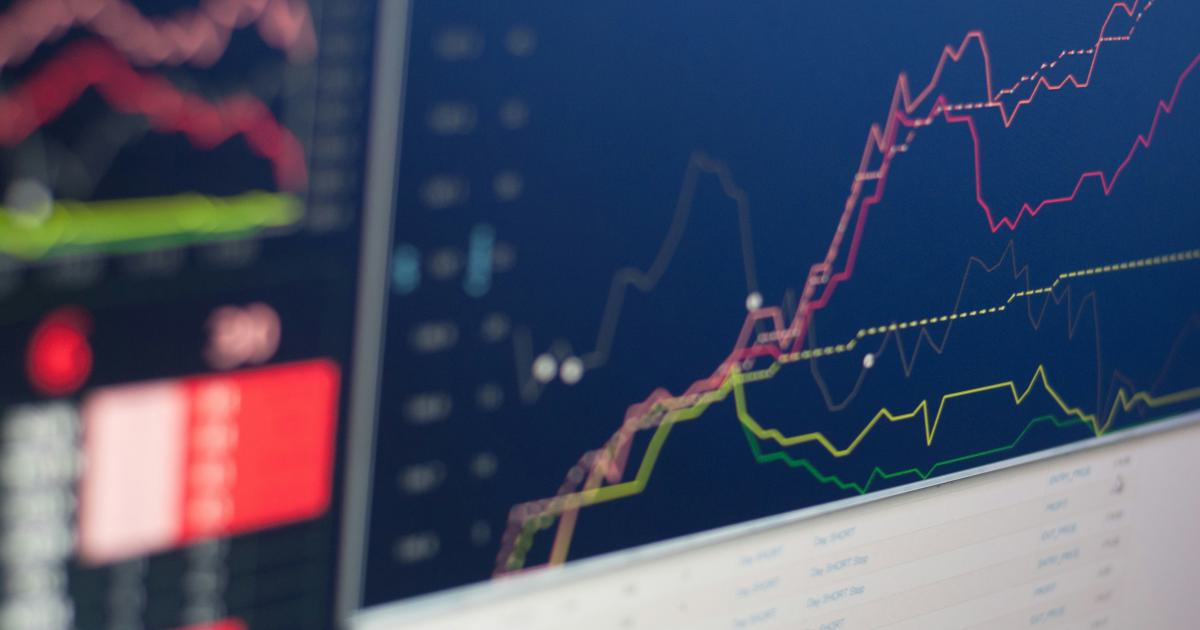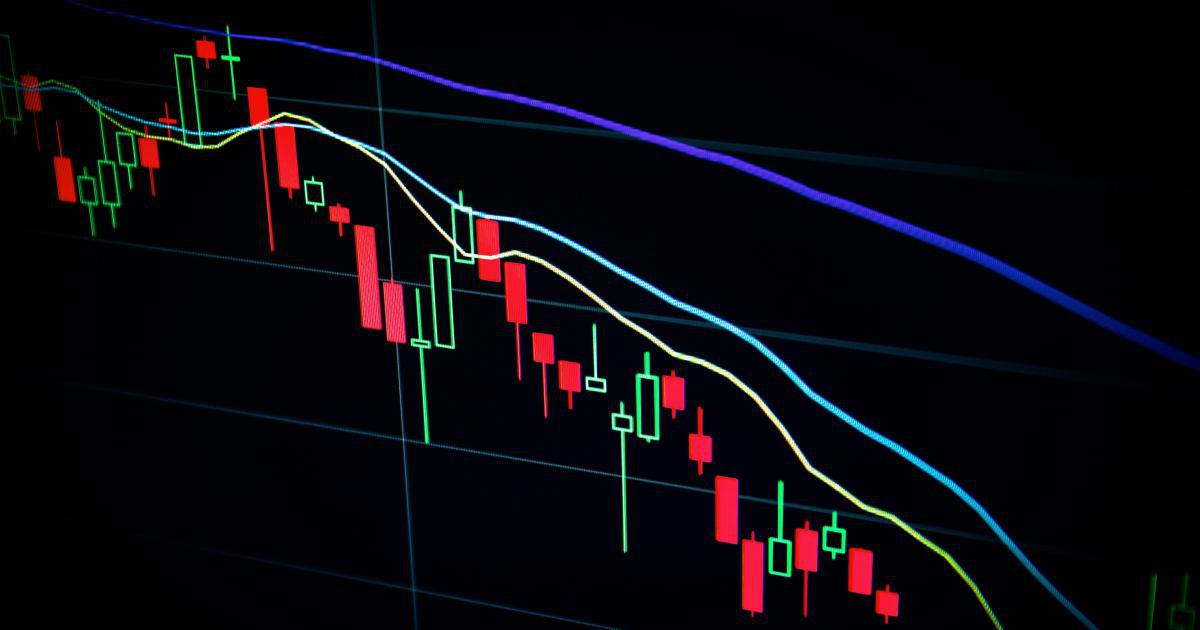7 Trend Following Stock Trading Secrets Revealed

Opening Hook
Picture this: It’s a brisk autumn morning, and Alex, a budding trader with bright eyes and unyielding ambition, sits in front of multiple screens. Charts flash by, numbers dance on the display, and a single thought pulses through Alex’s mind: "What if I could decode the market's hidden patterns?" Trend following stock trading has always intrigued Alex, igniting a burning curiosity to unveil the secrets that might just change the game of investing. As the early rays of sunlight filter through the blinds, casting long shadows across the trading desk, Alex recalls a conversation with a seasoned investor, Jordan, who once said,
"The market speaks to those who listen. It whispers its secrets through trends, and if you’re willing to follow, you might just catch the next big wave."
With this advice echoing in the background, Alex embarks on a journey—one that promises to uncover 7 pivotal secrets of trend following stock trading. In the labyrinth of market data, amidst the hum of economic news and the unpredictable pulse of global events, there lies a method, a rhythm, and perhaps, a gateway to financial mastery. This article delves deep into the narrative of trend following stock trading, outlining its intrinsic secrets, and weaving together expert opinions, data-driven insights, and real-life experiences. Within the next few thousand words, you'll journey alongside Alex and a cast of characters who have made trend following their modus operandi, discovering actionable techniques that could revolutionize how you approach the stock market.
Trend following stock trading is more than just a method—it’s an art that blends intuition with analytics, perseverance with discipline, and risk with reward. In this narrative, the market becomes a vast, mesmerizing ocean, and every trend, a tidal wave of opportunity waiting to be surfed.

The Journey
Every journey has its map, and in the realm of trend following stock trading, understanding the market’s currents is the compass that guides our decision-making process. For Alex, the journey began with a commitment to study the market patterns as if they were a treasure map. This section unravels each secret, marking key stops along the route to mastering the trends.
Secret 1: The Foundation – Recognizing the Trend
Alex’s first stop on this journey was to understand the very nature of trends. "A trend," explains Jordan during one of their long, insightful conversations, "is the heartbeat of the market. It’s not about predicting every twist and turn, but rather about identifying the overall direction in which the market moves over time."
The essence of trend following stock trading lies in the recognition of upward, downward, or sideways market movements. Alex learned that trends can be identified by looking at price momentum, moving averages, and the support/resistance levels. The simple yet effective moving average crossover strategy soon became one of Alex’s first reliable tools. When the short-term moving average crosses above the long-term moving average, it suggests a bullish trend, and vice versa for a bearish trend.
The concept of trend channels further intrigued Alex. Channels—bounded by parallel trendlines—often act as guide rails for price movements. If the price remains within these channels for a significant period, they can provide a roadmap for traders.
Jordan elaborated, "Trends aren’t static. They evolve. Sometimes, what seems like a definitive trend might undergo a subtle shift before a dramatic reversal occurs. That's why adaptability is critical."
Alex noted these insights in a leather-bound notebook, scribbling down formulas, drawing trend lines, and marking historical instances where trends shifted in unexpected ways. This practice of close observation and continuous learning would become the cornerstone for the ensuing secrets.
Secret 2: Timing is Everything – Mastering Entry and Exit Points
Having grasped the essence of trends, Alex’s next challenge was to master the art of entering and exiting trades—a critical factor in trend following stock trading. Jordan underscored the importance of precision: "Entering a trade is like catching the perfect wave. You must time it correctly, or risk missing the momentum."
To illustrate, consider the analogy of surfing: you wouldn’t dash into the water before the wave is ready, nor would you linger on a dying swells. The trader’s decision to enter or exit a position must be anchored in solid technical analysis. Alex discovered several indicators that refine this timing, such as:
- Relative Strength Index (RSI): A momentum oscillator that measures the speed and change of price movements.
- Moving Average Convergence Divergence (MACD): A trend-following momentum indicator that shows the relationship between two moving averages.
- Volume Analysis: Higher trading volume during a trend can solidify the validity of that trend.
In a candid discussion in a local trading group, Sarah, an experienced market analyst, emphasized, "There’s no magic bullet, but learning to read these indicators can help you catch that perfect wave. It’s about harmonizing your entry with the rhythm of the market."
Alex experimented with combining these tools into a cohesive strategy. Backtesting historical data revealed that aligning the RSI with MACD signals produced fewer false alarms and more consistent entry points. With patience and careful study, Alex began to see a pattern: when a stock displayed long-term momentum, the precision of these technical indicators could pinpoint the most opportune moments to either go long or secure profits.
As Alex honed this skill, the unpredictability of the market transformed into a series of measured, calculable movements. It was as though every trend whispered its own unique rhythm, just waiting for the right moment to be understood. The journey into timing instilled confidence, reinforcing the idea that in trend following stock trading, it is not merely about following trends but also about acting on them at precisely the right time.
Secret 3: The Shield – Effective Risk Management
Trading, by its very nature, carries risk. Jordan once remarked, "Without a shield, even the bravest warrior falls." For Alex, the shield was risk management—a secret that can make the difference between a minor setback and a catastrophic loss.
In trend following stock trading, risk management is not just a backup plan; it’s a fundamental principle that protects traders from the vagaries of the market. Alex embraced techniques such as setting stop-loss orders, using position sizing strategies, and diversifying across various assets and sectors. These methods serve to limit losses while preserving the potential for gains.
Consider stop-loss orders as an automatic safety net. They ensure that if a trend unexpectedly reverses, the trader can exit the position before incurring excessive losses. Alex recalls a particularly intense moment: while riding a strong upward trend, suddenly, the market became volatile. By having a pre-set stop-loss, Alex was able to exit the trade, safeguarding the investment from a steep fall.
Position sizing is another crucial component. Rather than committing all capital to a single trade, Alex learned to allocate a fraction of the portfolio to each position. This strategy reduces the impact of a single loss and allows for recovery and reinvestment in future opportunities.
"Risk management teaches traders humility and discipline," Jordan often reiterated. "It’s not about avoiding risk entirely; it’s about controlling it in a way that allows you to stay in the game long enough to reap the rewards."
The data corroborated this approach. Statistical studies showed that traders who integrated robust risk management into their strategies had a higher probability of consistent long-term success. Alex analyzed numerous case studies and documented the techniques meticulously, committed to never leaving the trading desk without a clear plan for loss mitigation.
The newfound respect for risk management wasn’t just academic. It became a transforming moment in Alex’s trading career—a point at which the chaotic nature of the market became a calculated risk rather than a gamble. Alex’s growing notebook was filled not only with technical strategies but also with diagrams, flowcharts, and risk matrices designed to quantify the risk-reward ratio in every trade.

Secret 4: The Mind Game – Controlling Emotions on the Trading Floor
Markets are driven by human behavior, and, as Jordan wisely noted, "Even the best strategies can be undermined by human emotions." The volatility and unpredictability of trend following stock trading often trigger emotional responses—greed, fear, overconfidence—that can lead to irrational decisions.
Alex vividly remembers a day when the market raged with unexpected news. A sudden political announcement sent shockwaves through the market, and panic was palpable. In the midst of this chaos, many traders made hasty decisions, believing that immediate action would save them from losses. But Alex stood firm. A deep breath, a recollection of the risk management lessons, and a calm analysis allowed for rational decision-making in a storm of emotions.
The secret here is mental discipline. Alex started applying techniques such as:
- Mindfulness meditation to maintain mental clarity during high-stress trading periods.
- Journaling emotions and reactions to identify patterns that may lead to impulsive decisions.
- Setting predefined rules to enter or exit trades, minimizing the emotional toll of last-minute decisions.
During a particularly enlightening conversation with mentor Jordan, Alex was advised, "Emotions are like quicksand. The more you struggle, the deeper you sink. Discipline in your trading is your lifeline – without it, every move is a gamble."
Over time, Alex cultivated a mental buffer by detaching personal ego from market outcomes. This detachment helped build resilience against the inevitable ups and downs of the trading world. Embracing the reality that losses are part of the game was a turning point—a mental shift that turned potential panic into calm focus.
This inner transformation didn’t occur overnight. It was a gradual awakening to the fact that successful trend following stock trading requires an equilibrium between rational analysis and emotional control. The markets may be turbulent, but a mind in clear focus is the best navigational tool.
Secret 5: Data-Driven Decisions – The Role of Backtesting and Analysis
In the world of trend following stock trading, data reigns supreme. Alex’s journey continued with a deep dive into the mechanics of backtesting—a method used to test trading strategies against historical data. This secret is crucial because it allows traders to verify the viability of their strategies without the risk of losing real capital.
Alex encountered a turning point when meeting Mia, a quantitative analyst known for her rigorous approach to data. Mia explained, "Backtesting isn’t just a way to confirm your hunches; it’s a disciplined method of validating your methods against time-tested data." Together, they analyzed vast datasets, looking at various moving averages, divergence signals, and volume fluctuations across different market cycles.
Mia introduced Alex to software tools that automate the backtesting process, enabling the simulation of hundreds of trades under different market conditions. Through iterative cycles of testing and refinement, Alex’s strategy evolved from a rough idea to a finely tuned mechanism capable of adapting to market fluctuations. The realization that data could illuminate hidden patterns and forecast market behavior was both empowering and humbling.
The process was methodical and required a lot of patience:
Collect historical price and volume data.
Program the trading strategy using a coding platform.
Simulate trades using this historical data.
Analyze the performance and optimize parameters.
Validate the strategy with out-of-sample data.
A particularly enlightening statistic came from a study indicating that strategies optimized through backtesting had a 15-20% higher chance of consistent performance compared to those based solely on intuition. This data not only bolstered Alex’s confidence but also provided concrete proof of the underlying theory behind trend following stock trading.
The significance of backtesting lay in its ability to bridge the gap between theoretical strategy and real-market dynamics. As Alex meticulously adjusted parameters and noted down results, it was clear that every market nuance—be it a minor retracement or an unforeseen breakout—could be anticipated, quantified, and incorporated into the decision-making process.
"Data has a way of revealing the unseen forces at play in the market," Mia noted during one of their long sessions. "It’s like having a conversation with the past—a dialogue that equips you to face the future."
Secret 6: Harnessing Technology – Embracing Automation and Algorithmic Trading
In today’s digital era, technology is an inseparable component of trend following stock trading. Alex realized that leveraging automated trading systems could minimize emotional bias and streamline the execution of complex strategies. The integration of algorithmic trading systems marks a quantum leap, turning manual jitters into systematic precision.
One crisp morning, while automated scripts ran in the background, Alex engaged in a conversation with Ravi, a software engineer specializing in trading algorithms. Ravi explained, "Automation is not about removing the human element; it’s about enhancing human capability. Your insights guide the strategy, and technology executes it flawlessly."
Automated systems based on pre-programmed rules allow for swift responses to market changes—executing trades within milliseconds of identifying a trend. This speed and precision are crucial in today’s fast-paced markets, where even slight delays can result in significant differences in profit margins. Ravi demonstrated how even advanced technical indicators, when programmed, could continuously monitor and adjust strategies in real time.
For Alex, the adoption of technology meant not only quicker execution but also the ability to analyze multiple data streams simultaneously. With the aid of machine learning algorithms, patterns that eluded the naked eye became visible, offering insights into market behavior that were both profound and actionable.
Key benefits of automation in trend following stock trading include:
- Reducing emotional correlation by eliminating manual intervention.
- Enabling high-frequency data analysis to capture fleeting market opportunities.
- Providing consistency in applying risk management parameters.
Despite the advantages, Alex also recognized the importance of maintaining a healthy balance. Reliance solely on technology without continuous oversight can lead to over-optimization or mechanical failures during unusual market conditions. Therefore, a hybrid approach—melding the best of human intuition with algorithmic efficiency—became the preferred strategy.
The dialogue with Ravi concluded with a powerful message: "In the dance of man and machine, it’s the harmony of both that creates a symphony of success." Inspired by Ravi’s words, Alex updated the trading strategy to integrate both automated signals and manual verification, ensuring robustness in even the choppy waters of the modern financial markets.

Secret 7: The Future Is Now – Adapting and Evolving with the Market
The final secret in this saga echoes the realization that markets are not static—they are living entities that evolve over time. Alex, now a seasoned trader armed with the previous six secrets, faced the ultimate challenge: adapting to new market conditions and anticipating the future.
In a pivotal meeting over coffee with a panel of experts, Alex listened intently as they debated the role of emerging technologies, global economic shifts, and regulatory changes on trend following stock trading. One expert, Linda, a veteran trader with decades of experience, stated,
"Market adaptability is the culmination of every lesson you've learned. It’s about recognizing that no strategy remains perpetual without evolution."
Linda explained that successful traders continuously monitor market environments and remain open to modifying their strategies. For instance, what worked in the bullish trends of the past decade might need recalibration in the face of new economic realities, technological advancements, or even global crises. The very essence of trend following stock trading is to keep pace with these transformations.
Alex took this lesson to heart and began to integrate periodic reviews and dynamic adjustments into the trading routine. This approach involved:
- Regularly reassessing the performance of existing strategies.
- Monitoring macroeconomic and geopolitical developments.
- Experimenting with new technical indicators and refining automated systems.
- Engaging with the trading community to exchange insights and evolving best practices.
This phase was marked by experimentation and occasional setbacks. Yet, each challenge presented an opportunity to learn. Alex found solace in feedback from both human mentors and algorithmic outputs, which together painted a more vibrant picture of the market’s future trajectory.
A remarkable plot twist unfolded when an unexpected market downturn revealed that even the most refined trends could be disrupted by unforeseen global events. Instead of lamenting the setback, Alex recalibrated the strategy, incorporating stress-testing scenarios that anticipated such disruptions. This adaptability not only salvaged potential losses but also paved the way for a rebound when market sentiment stabilized.
"The market never stands still," Linda advised. "Your strategy should be as dynamic as the forces that move it. Adaptation is not optional—it’s essential."
In embracing change and evolution, Alex found a renewed sense of purpose. The journey had come full circle: from understanding foundational trends to mastering risk and emotion, from harnessing data and technology to adapting for the future. This synthesis of strategy, discipline, and continuous learning encapsulated the true essence of trend following stock trading.
Climax: The Moment of Insight
After months of rigorous study, relentless testing, and countless hours analyzing data, a breakthrough moment arrived. Alex reviewed the trading journal, filled with annotated charts, risk matrices, and reflective insights. The convergence of all seven secrets became clear: success in trend following stock trading is not the product of a single strategy, but rather the harmonious integration of solid trend recognition, impeccable timing, robust risk management, emotional discipline, data-driven analysis, technological prowess, and adaptability.
In a reflective moment, Alex mused, "Every secret is a piece of a larger puzzle. The trend is the canvas, and our choices—the strokes of a master artist." It was a realization that resonated deeply. The market, with all its twists and turns, mirrored life itself—a series of unpredictable yet navigable paths, shaped by both chaos and order.
This epiphany marked a turning point: the fear of complexity was replaced by a keen excitement for continuous learning. Alex understood that while no strategy can guarantee unerring success, an adaptive and well-rounded approach makes the market’s volatility a pathway to opportunity rather than a threat. As the sun set over a day of hard-won victories and hard-earned lessons, Alex prepared for the challenges and promises of the future with renewed vigor.
Resolution: Practical Takeaways and the Road Ahead
The journey through these 7 secrets has not only been an exploration of advanced techniques in trend following stock trading but also a narrative of personal growth. For every trader—whether novice or experienced—the following takeaways can serve as guiding principles:
Embrace Continuous Learning:
Plan Every Move:
Prioritize Risk Management:
Manage Your Emotions:
Leverage Data and Technology:
Cultivate Adaptability:
Integrate and Innovate:
Reflecting on this journey, Alex now sees the stock market not as a game of chance, but as a sophisticated dance of trends, signals, and strategies. The lessons learned are timeless: every tick of the market is an opportunity to learn, adapt, and grow. While the road ahead may be fraught with challenges, the dedication to follow the trends, control the risks, and harness the tools at hand transforms each obstacle into a stepping stone towards financial mastery.
"In the confluence of discipline and innovation, we unlock the true potential of every trend."
– Jordan
For anyone considering a foray into trend following stock trading, remember that the path is as important as the destination. With a mindset geared for adaptation and a strategy built on rich insights, financial success might be just one trend away.

As you close these pages, ask yourself: What trend will you follow? How will you integrate these secrets into your trading approach? The future is a blank canvas, waiting for the strokes of a master artist—perhaps you.
Epilogue: The Continuous Voyage
The journey doesn’t end here. Just as the market never sleeps and trends continuously evolve, your strategy should be in a constant state of refinement. Alex’s story is a testament to perseverance, learning through experience, and the willingness to adapt. Whether you're a beginner or a seasoned trader, remember that every challenge is an opportunity to unearth a new trend, to learn a new secret, and to inch closer to financial wisdom.
Trend following stock trading, with all its nuances and fluctuations, is a long-term commitment—a marathon rather than a sprint. By staying informed, leveraging technology, and continually revising your approach, you can build a robust trading system that stands resilient in the face of market volatility.
So, take a deep breath, sharpen your analytical tools, and step onto the trading floor with confidence. There is a dynamic world of trends and opportunities waiting to be discovered, and the secrets you now hold may be the very keys to unlocking your financial future.
Final Thoughts
The journey through these 7 secrets has provided more than just techniques; it has illuminated a mindset—one that blends caution with audacity, curiosity with discipline. As you venture into trend following stock trading, may you find not only financial success but also a deeper understanding of the dance between risk and reward. Keep your eyes open, your strategy agile, and your spirit unyielding. The market’s whisper is always there—ready for those who dare to listen.
The voyage of trend following stock trading is far from over. Every market day presents a fresh canvas, each trend a new chapter in the story of potential triumph. Embrace each moment, learn from every twist, and let the rhythm of the market guide you towards a prosperous tomorrow.
Happy trading, and may your journey be as enriching as it is successful!
Unlock Trading Potential with Automated Analysis
Tired of missing opportunities and making suboptimal trading decisions? TrendSpider's cutting-edge platform automates complex technical analysis, saving you time and reducing human error.
With multi-timeframe analysis, dynamic alerts, backtesting, and customizable charting, you'll gain a competitive edge in identifying trends and making informed trades across global markets.
Unleash the Power of Automated Trading Analysis
Are you struggling to keep up with the fast-paced trading world? TrendSpider empowers you with cutting-edge tools for optimal strategy execution.
Our automated technical analysis suite eliminates guesswork, backtests strategies, and delivers real-time alerts, saving you valuable time and effort.


